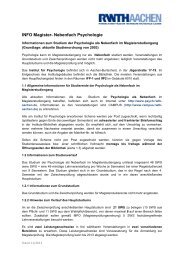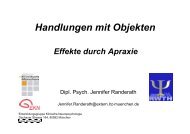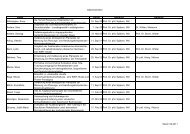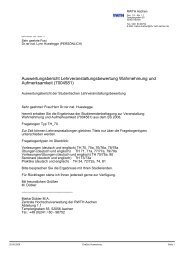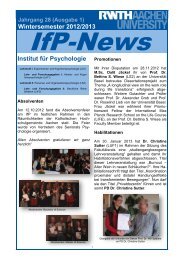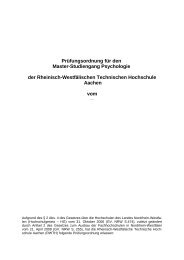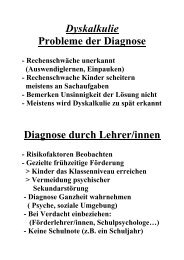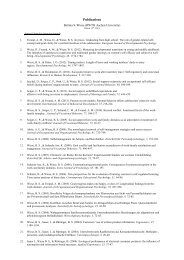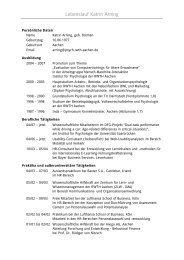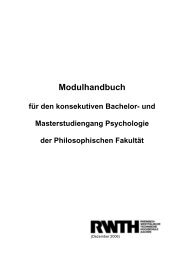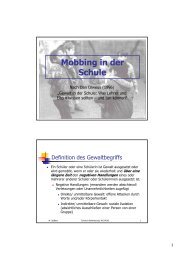1 Effects of Sensorimotor Transformations with Graphical Input ...
1 Effects of Sensorimotor Transformations with Graphical Input ...
1 Effects of Sensorimotor Transformations with Graphical Input ...
You also want an ePaper? Increase the reach of your titles
YUMPU automatically turns print PDFs into web optimized ePapers that Google loves.
other words, as tablet amplitudes were held constant in each panel <strong>of</strong> Figure 2, Fitts’ law<br />
holds again for the action-effect movements on the display (i.e. the cursor movements).<br />
Performance was best if the gain was 2.44 and dropped <strong>with</strong> lower or higher gains. Once<br />
more, this result confirms the optimum gain setting for motion transforming input devices (cf.<br />
Arnaut & Greenstein, 1986, 1990; Lin et al., 1992; Tränkle & Deutschmann, 1991).<br />
A further observation <strong>of</strong> the present experiment was that participants were mostly<br />
unaware <strong>of</strong> their tablet amplitude. Informal reports gathered after the experiment revealed that<br />
participants did not notice that the hand amplitude remained constant <strong>with</strong>in a block and only<br />
display amplitude was varied by a change in the gain. In other words, the proprioceptive<br />
feedback <strong>of</strong> the hand movement did not countervail against the visual action effect (cf.<br />
Müsseler & Sutter, 2009).<br />
Two aspects are critical to note. First, the cursor movements on the display did not<br />
only determine movement times, but they also depended strongly on the tablet amplitude.<br />
Comparing the panels <strong>of</strong> Figure 2, larger tablet amplitudes seemed to lead to an increase in<br />
movement times. One might argue that for the smaller tablet amplitudes movements involve<br />
distal joints (e.g. finger, wrist), which produce shorter movement times. Contrary, for larger<br />
tablet amplitudes movements involve proximal joints (e.g. arm) yielding longer movement<br />
times (Langolf et al., 1976; Bohan, Thompson & Samuelson, 2003). However, in our<br />
experiment participants were able to cover all distances <strong>with</strong> wrist movements, even the<br />
longest distance <strong>of</strong> 60 mm. This lets us conclude that the increase <strong>of</strong> hand amplitude<br />
intensified the impact <strong>of</strong> changes in visual space. And furthermore, if distal joints were<br />
involved even stronger effects on movement time can be expected.<br />
Second, the increase in movement times is not just described by an additive<br />
component, as the different slopes <strong>of</strong> regression lines in Figure 3 suggest. When additionally<br />
error percentages were taken into account, we found an increase <strong>of</strong> errors <strong>with</strong> the larger<br />
16



